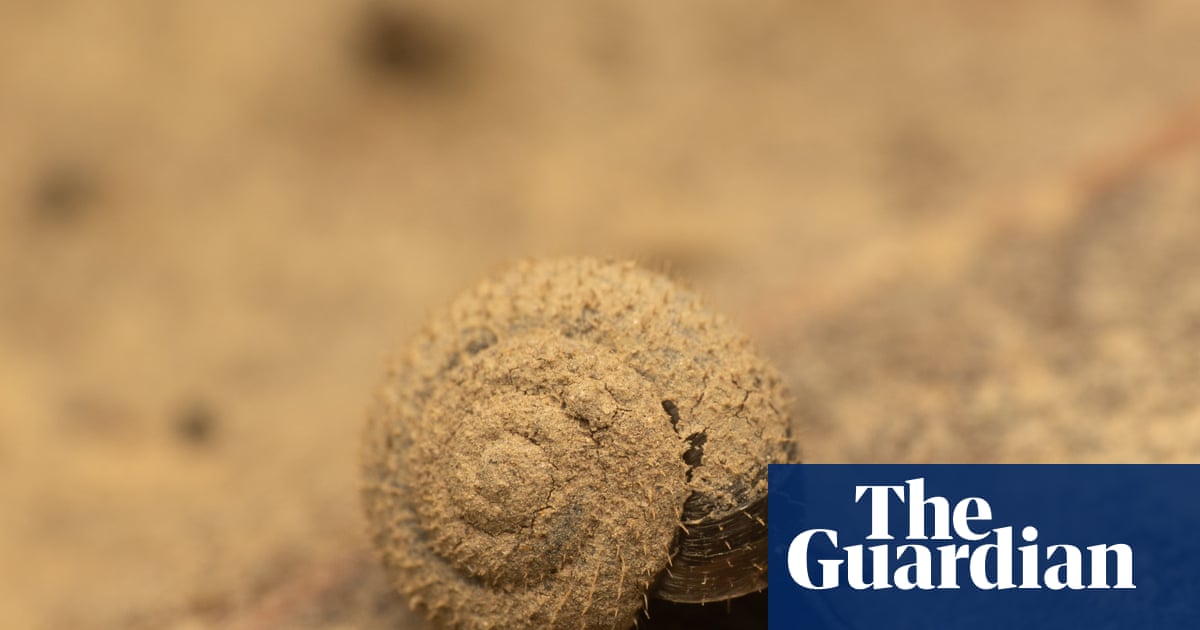It is tiny, hairy and “German” – and it could be hiding underneath a piece of driftwood near you. Citizen scientists and expert conchologists are teaming up to conduct the first London-wide search for one of Britain’s most endangered molluscs.
The fingernail-sized German hairy snail (Pseudotrichia rubiginosa) is found in fragmented patches of habitat mostly along the tidal Thames.
It was not recorded in Britain until 1982 but fossilised remains indicate it has been here since at least Neolithic times and possibly since the last ice age, when the Thames was still connected to the Rhine, Germany’s longest river.
Now more than 100 volunteers have joined a coordinated search for the snail, led by Citizen Zoo and the Zoological Society of London (ZSL).
The snail is typically found clinging to debris along the high-tide line of the Thames, its islands and tributaries including the Lee. The fine hairs that run along its slim, round shell are thought to allow the mollusc to shed moisture, ensuring its slime is sticky enough to cling to the plants it feeds on and slippery riverside objects.
“I was over the moon when I found my first one, I never thought I’d be so excited,” said Elliot Newton, director of rewilding at Citizen Zoo. “They are beautiful creatures if you really pay attention to them and very curious looking, covered by these little straight hairs.”
Joe Pecorelli, freshwater conservation programme manager at ZSL, said: “This charming little snail has called our riverbanks and wetlands home for thousands of years – yet it is sadly now very rare in the UK, potentially restricted to just a few sites along the Thames.
“These surveys will help us understand how the snail is faring and how we can protect it – not only securing their future for years to come, but also helping safeguard green spaces throughout London for people and wildlife for future generations.”
The survey team, which is supported by partners including London Wildlife Trust, the Conchological Society of Great Britain and the Port of London authority, has found the snail near Kew, in Richmond upon Thames, Isleworth Ait and east at Cody Dock on the Lower Lee.
skip past newsletter promotion
The planet’s most important stories. Get all the week’s environment news – the good, the bad and the essential
Privacy Notice: Newsletters may contain information about charities, online ads, and content funded by outside parties. If you do not have an account, we will create a guest account for you on theguardian.com to send you this newsletter. You can complete full registration at any time. For more information about how we use your data see our Privacy Policy. We use Google reCaptcha to protect our website and the Google Privacy Policy and Terms of Service apply.
after newsletter promotion
The surveys will help identify how habitat restoration, pollution management and the potential translocation of snails between sites can help boost a species, which is a priority in the London biodiversity action plan and considered endangered in other European nations such as Germany.
Newton said: “The German hairy snail is a species that helps spark imagination and open people’s minds to the curious and diverse wildlife that can thrive across Greater London. It reminds us of the remarkable natural world that exists right on our doorstep.”
